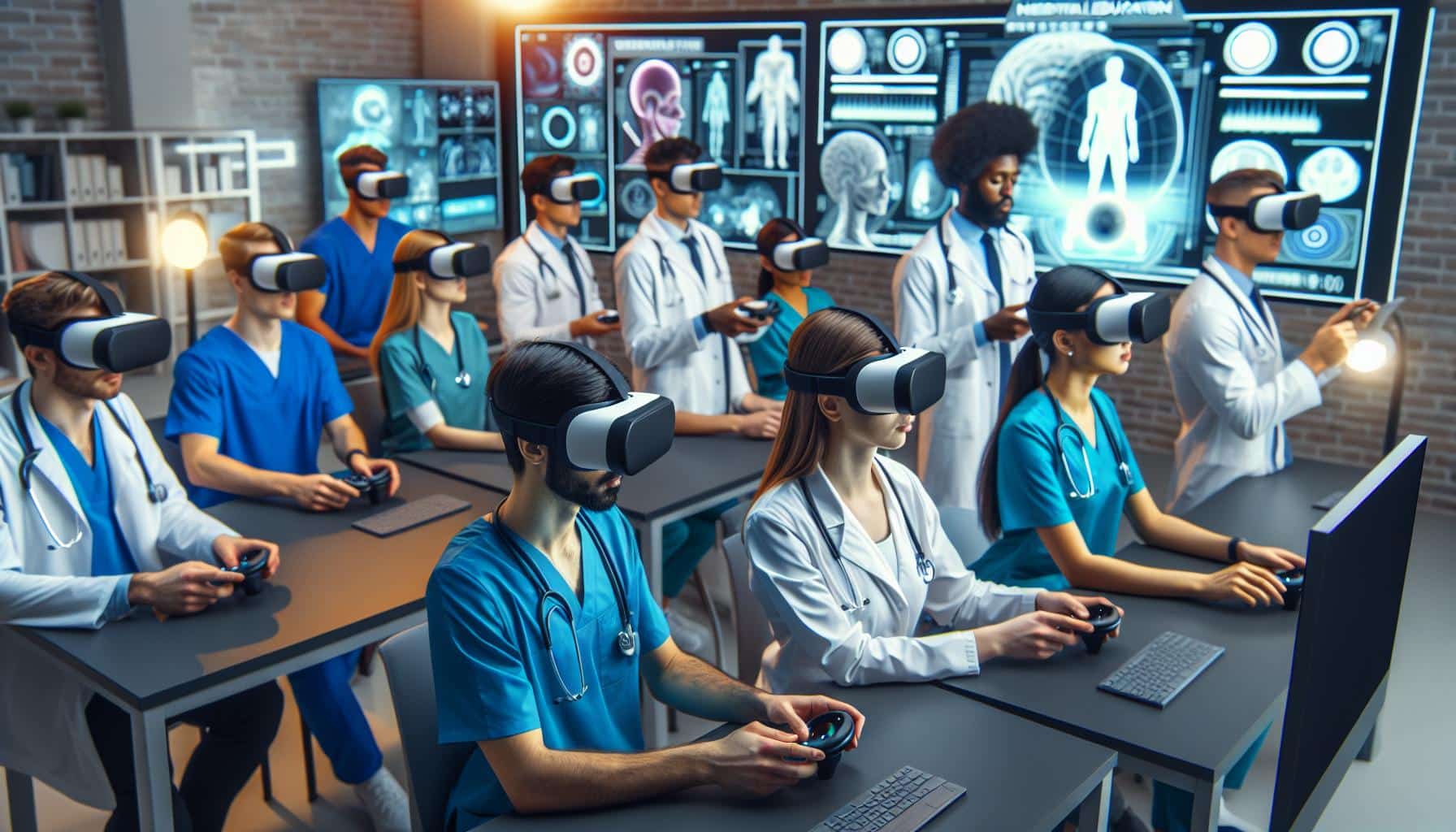VR Technology Revolutionizes Medical Education
Medical students are embracing virtual reality (VR) technology for a more immersive and personalized learning experience. Instead of crowded operating rooms and limited views, students can now don VR goggles and choose the best angle to observe procedures. With VR gloves, they can even “feel” the instruments. This technology not only benefits medical students, but it is also being used by hospitals for continuing education. Surgeons are using VR to train other doctors on innovative procedures, teaching hospitals are incorporating it into their training programs, and healthcare organizations around the world are implementing VR for various purposes. However, the main barrier to widespread adoption is budget constraints.
Making the Business Case for VR in Healthcare
Providers are finding ways to justify the implementation of VR technology in healthcare by focusing on cost reduction and avoidance. By replacing traditional training methods, VR training eliminates the need for travel, venue rental, equipment purchase, and hiring actors to simulate training scenarios. This significantly reduces costs in the long run. Additionally, VR training saves time in planning and executing training sessions, as it offers flexible scheduling options. The reusable nature of VR courses also contributes to cost reduction, as the more trainees taking the course, the lower the cost per student. Studies have shown that VR training improves clinical performance and provides a more immersive learning environment. Furthermore, some medical professionals are exploring the opportunity to generate revenue by offering premium virtual courses or creating a virtual “library” of procedures.
Providers Speak Out on VR in Healthcare
In a recent survey of healthcare professionals, respondents expressed positive views on the use of VR in their organizations. They believe that VR training would cut down on training time, attract new graduates, and save their organizations a significant amount of money. The open-ended comments from the survey respondents demonstrate the potential benefits of VR technology in healthcare.
VR Training Reduces Costs and Improves Learning Experience
Medical students and professionals are finding VR training to be cost-effective and more immersive than traditional methods. By eliminating the need for travel, renting specialized venues, and purchasing expensive equipment, VR training provides a more accessible and personalized learning experience.
VR Training Improves Efficiency in Healthcare Facilities
With the shortage of healthcare workers and high staff utilization, VR training offers a flexible scheduling option for trainees and frees up trainers to focus on improving course materials. The time saved in planning and executing training sessions can be utilized for other high-value tasks.
VR Training Provides Reusable Courses
One of the greatest benefits of VR training is the ability to reuse course content. Once a simulation is created in VR, it can be experienced repeatedly, allowing for learning through repetition. This not only enhances learning outcomes but also reduces the cost per student as more trainees can take the course.
VR Training Enhances Clinical Performance
Studies have shown that immersive VR simulations enable learners to retain information better and improve their clinical performance. Medical professionals who have used VR for training purposes have found it to be more effective than real-life experiences.
VR Training as a Potential Revenue Source
Some medical professionals are exploring the opportunity to generate revenue by offering premium virtual courses or creating a virtual “library” of procedures. This innovative approach not only benefits healthcare organizations but also opens up new revenue streams.
In conclusion, VR technology is revolutionizing medical education and training. Its immersive and personalized nature provides a more effective learning experience for medical students and professionals. While budget constraints remain a challenge, the long-term cost-saving benefits and improved outcomes make a strong case for the adoption of VR in healthcare.
Analyst comment
Positive news: VR technology is revolutionizing medical education and training, providing a more immersive and personalized learning experience for students. It also reduces costs in the long run, improves efficiency in healthcare facilities, provides reusable courses, enhances clinical performance, and offers potential revenue sources. However, the main barrier to widespread adoption is budget constraints. Nonetheless, the long-term benefits make a strong case for the market to adopt VR in healthcare.













